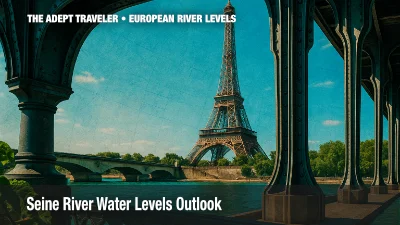European River Cruise Water Levels, Week of Dece,ber 8, 2025
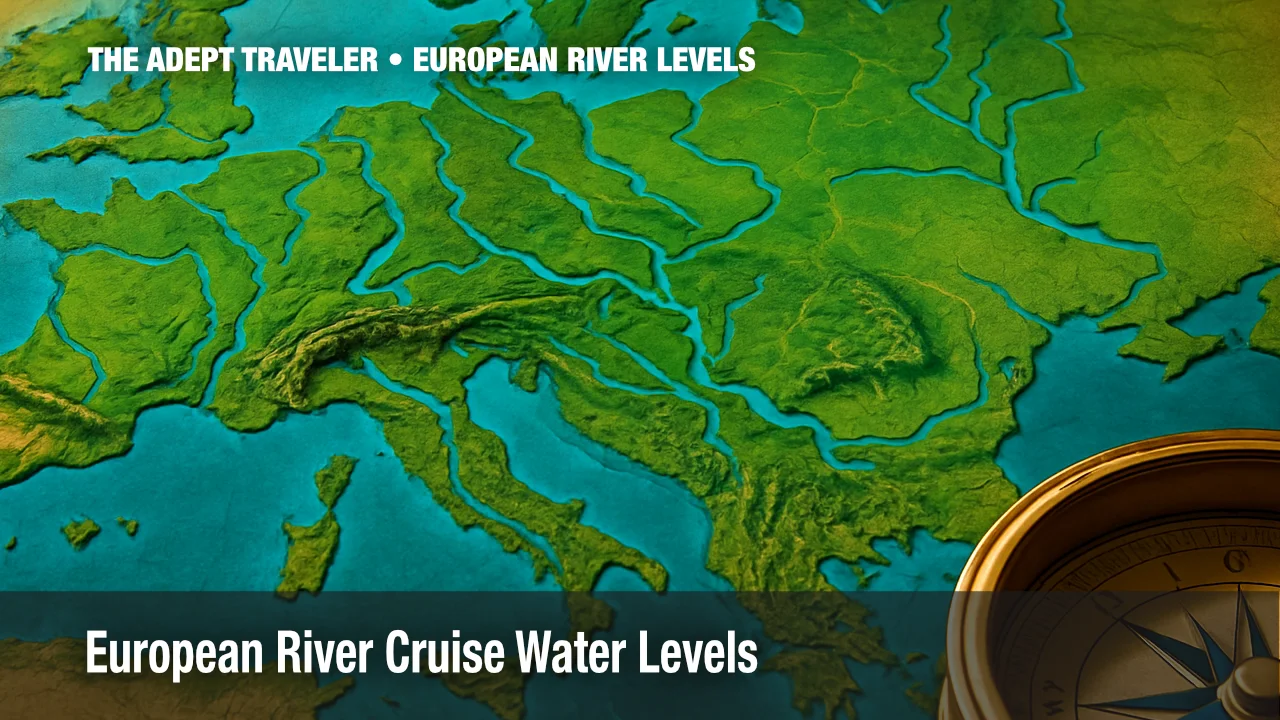
Overall risk is steady, with all major cruise rivers still within normal navigation bands and only structurally sensitive Po and Elbe kept at Caution because they react faster to any new drought or flood pulses.1,3,5,6,7,8,9,10,11
Executive Summary
Real time gauge networks along the Danube, Rhine, Moselle, Main, and French cruise rivers show levels in a broadly mid range band for early winter, with no key cruise gauges near formal low water or flood shutdown thresholds.1,2,3,4,5,6,7 Seven day forecasts for core hubs such as Regensburg, Paris, Porto, and Budapest point to typical December conditions, cold inland, milder near the Atlantic, with passing rain and a few wintry episodes rather than a single, long lived storm system aimed at the cruise corridors.12,13,14,15,16,17
The main watch points stay the Po and Elbe, where recent years have swung between severe drought and damaging floods, so even a modest new wet or dry spell can tighten navigation margins faster than on more heavily regulated basins like the Rhine and Main.6,7,8,9,10,11 For this week we still expect most scheduled cruises on these rivers to operate, but operators will be quicker to trim loads, adjust docking, or substitute coaches if local gauges move sharply.5,6,7,8,10,11
For travelers, that combination translates into a broadly favorable window for December Christmas market and holiday sailings, with water risk lower than in the worst recent summers but still worth watching if you sail on the Po or Elbe.5,6,7,8,9,10,11 Booked guests should stay in close touch with their cruise line or travel advisor for any last minute pier or timing changes, and new shoppers eyeing late December or early January departures should factor our Caution labels into decisions on routing, cabin choice, and insurance timing.
River Summary Table
| River | 7-Day Navigation Risk |
|---|---|
| Danube | Normal |
| Dordogne | Normal |
| Douro | Normal |
| Dutch & Belgian Waterways | Normal |
| Elbe | Caution |
| Garonne | Normal |
| Gironde | Normal |
| Main | Normal |
| Moselle | Normal |
| Po | Caution |
| Rhine | Normal |
| Rhône | Normal |
| Saône | Normal |
| Seine | Normal |
Risk labels combine current gauge readings on the main cruise stretches with ensemble seven day weather forecasts across each basin, then roll that into a simple view of whether full navigation, minor restrictions, or more serious disruption are most likely.1,2,3,4,5,6,7,8,9,10,12,13,14,15,16,17
Risk label key
- Normal, full navigation expected.
- Caution, minor restrictions possible, monitor updates.
- Disruption, significant low or high water likely, bussing or reroutes expected.
How to Use This Page
Start here for the big picture, then click through to the spoke page for the specific river you are sailing.4,5 Each spoke focuses on one primary cruise gauge or stretch, explains what today’s reading means for ship clearance, and translates local metric values into feet and inches so you can compare across rivers more easily.1,2,3,4,5
Next, use the seven day outlook on your river’s spoke to judge how stable conditions look over the actual week you travel.1,2,3,4,5,12,13,14,15,16,17 A Normal label with gently rising or steady gauges usually means standard operations, while a Caution label, especially on structurally sensitive rivers like the Po and Elbe, means you should watch for line communications about possible draft limits, lock delays, or coach substitutions on specific days.5,6,7,8,9,10,11
Finally, look at the three week risk blocks on the spoke page and compare them with your final payment date or planned booking window.4,5,12,13,14,15,16,17 If your trip falls into a higher risk period, you may want a more flexible fare or insurance option, and you should coordinate closely with a trusted travel advisor about backup plans such as alternate dates, different rivers, or a land itinerary that can absorb short notice changes.
Sources
- DanubeHIS current water level time series for Danube basin stations
- Danube portal gauge information for Nagymaros, including forecast values
- Regional Danube gauge summary including Schwabelweis, Pfelling, and other key stations
- ICPDR overview of the Danube Hydrological Information System and its role in flood risk management
- Central Commission for the Navigation of the Rhine, information on navigation conditions and Kaub low flow indicators
- MarineLink report on Rhine River shipping returning to normal after low water in 2025
- Hapag-Lloyd 2025 Rhine low water surcharge schedule tied to Kaub and Cologne gauge thresholds
- Euronews coverage of Italy’s River Po drought and state of emergency in northern regions
- Analysis of Europe’s 2022 drought and impacts on the Po and other rivers
- Report on Dresden floods highlighting recurring high water on the Elbe
- SEI discussion of past Central European floods and crest levels on the Elbe and Danube
- Weather25 December 2025 climate summary for Regensburg, Germany
- Weather25 December 2025 climate summary for Paris, France
- Weather25 December 2025 climate summary for Porto, Portugal
- Weather25 December 2025 climate summary for Budapest, Hungary
- Timeanddate fourteen day extended forecast for Paris, updated December 8 2025
- Weather.com monthly forecast for Regensburg with December 8 2025 update
Danube River Water Levels Outlook, Week of December 8, 2025

Dordogne River Water Levels Outlook, Week of December 8, 2025
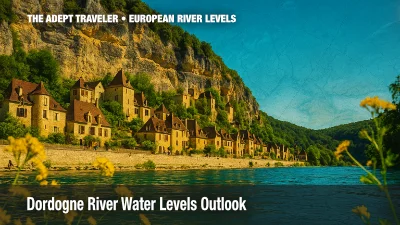
Douro River Water Levels Outlook, Week of December 8, 2025
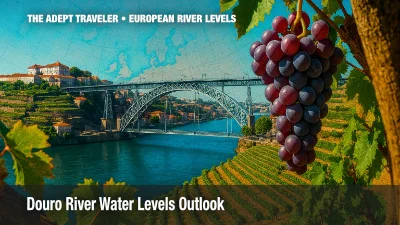
Dutch & Belgian Waterways River Water Levels Outlook, Week of December 8, 2025
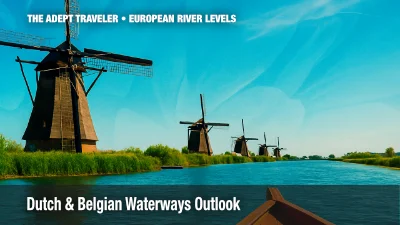
Elbe River Water Levels Outlook, Week of December 8, 2025
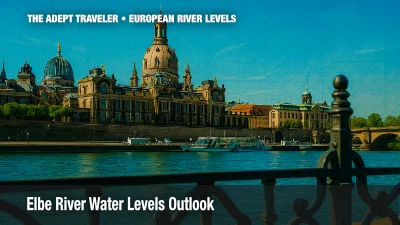
Garonne River Water Levels Outlook, Week of December 8, 2025

Gironde River Water Levels Outlook, Week of December 8, 2025

Main River Water Levels Outlook, Week of December 8, 2025
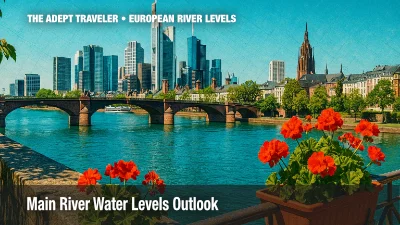
Moselle River Water Levels Outlook, Week of December 8, 2025
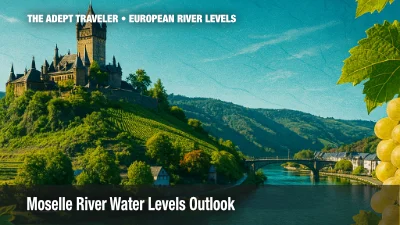
Po River Water Levels Outlook, Week of December 8, 2025
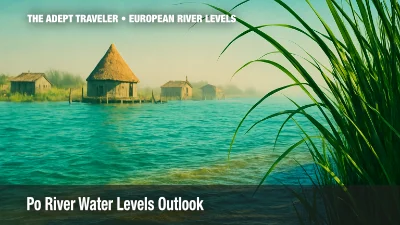
Rhine River Water Levels Outlook, Week of December 8, 2025

Rhône River Water Levels Outlook, Week of December 8, 2025
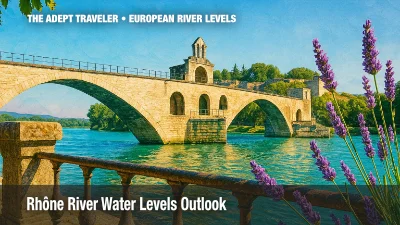
Saône River Water Levels Outlook, Week of December 8, 2025

Seine River Water Levels Outlook, Week of December 8, 2025
